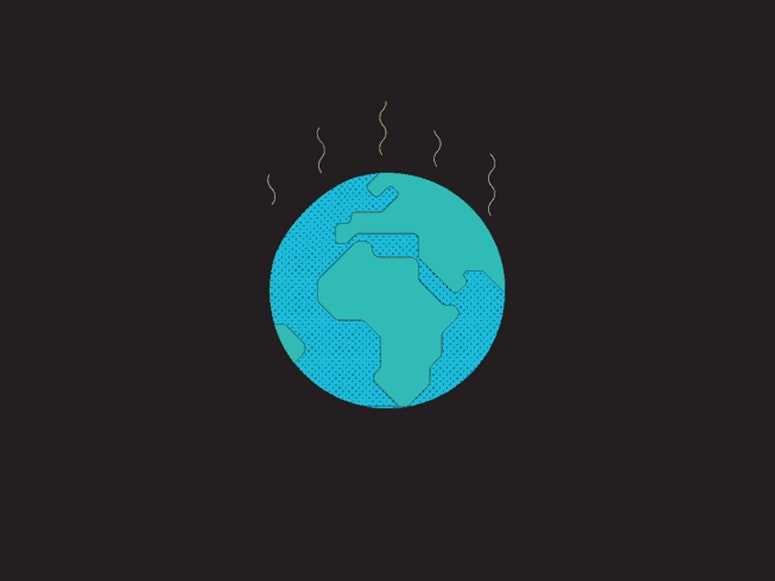Buildings in Russia are crumbling like they’re made of Lego bricks. Alaska spends millions of dollars each year repairing roads that are dipping and wrinkling. In Canada, Iqaluit Airport’s runway is sinking, when pilots would really prefer it not.
You can’t blame engineers for building on top of permafrost, the frozen land of the far north and high altitudes—in some Russian cities, up to 80 percent of buildings sit on this ground. The substrate is supposed to stay frozen; it’s right in the name. But land in the Arctic, and beyond, is in revolt. As the Arctic warms four times as fast as the rest of the planet, permafrost is thawing at an alarming rate, dragging down whatever’s at the surface or buckling anything that’s buried—roads, railways, pipelines, sewers, electrical transmission lines.
“Permafrost regions, they actually are not vast empty spaces where polar bears live,” says George Washington University climate scientist Dmitry Streletskiy, coauthor of a review paper on permafrost that was published last week in the journal Nature Reviews Earth and Environment. “There are a lot of people, industries, settlements, developed infrastructure, and those regions are very active economically.” Permafrost thaw threatens hundreds of Arctic villages and cities, and could put up to 70 percent of circumpolar infrastructure at high risk by mid-century, his team writes, costing billions to repair roads, bolster structures, and ensure that trains don’t derail on warped tracks.
Permafrost is a mixture of dirt, sand, or gravel frozen in a matrix of ice. Because solid water takes up more space than liquid water, when permafrost thaws, the land shrinks. The higher its ice content was, the greater the dip. If this sinking were happening uniformly across a landscape, it might not be such a big deal, as the infrastructure would also sink uniformly. But if the ground thaws at one end of a building but not the other, the differential can snap the foundation. It’s a particularly bad problem in big Soviet-era cities full of large apartment buildings that put a lot of weight on the permafrost: By 2012, some 40 percent of buildings in the Russian city of Vorkuta had already suffered this deformation, and in some indigenous towns it’s more like 100 percent.
Roads and railways—known as linear infrastructure—are even more vulnerable because they stretch across the landscape, and therefore have plenty of opportunity to sink at different rates. “You don’t want part of a pipeline to go down and another [part] stay in the same place,” says Streletskiy. Roads face an additional challenge; they’re out in the open where the sun can heat the underlying permafrost. (Buildings at least provide a bit of shade to keep the ground cool.)
But even if permafrost doesn’t totally thaw, warming may compromise its structural integrity, and that of whatever’s on top of it. “If you take pizza out of the freezer, it is frozen solid,” says Streletskiy by way of analogy. “You put it on a table and with time it becomes kind of softer and softer. It is still frozen, but you already know the mechanical properties are changing.”
Thawing permafrost also exacts an incalculable cost on the climate: It stores half of the organic carbon in the world’s soils. As it thaws, microbes start to chew on that organic material and spew greenhouse gases, which further heat the planet. In some parts of the Arctic, permafrost is thawing so quickly that it’s gouging craters in the ground, where standing water releases methane, a particularly potent greenhouse gas.
Permafrost thaw joins peat fires and land subsidence—when soil collapses after losing groundwater—in a triad of understudied yet hugely important geological menaces of humanity’s own making. Peat is made of thousands of years’ worth of plant material that have accumulated, layer after layer. It’s not frozen, but wet, which preserves the organic matter. Yet as the climate warms, it’s been drying out across whole landscapes, creating a carbon-rich fuel that can burn with one lightning strike. “Nature doesn’t want peat to be flammable,” says Guillermo Rein, who studies peat fires at Imperial College London. Unlike typical Californian or Australian wildfires that race through vegetation, this kind of fire smolders through the ground. “They are the largest fires on Earth, but also the slowest fires on Earth. Like, literally a baby can outrun them,” he continues.
That, however, does not make them harmless. The things are darn near impossible to extinguish: In the Arctic, they’ll actually smolder underground through the winter, even when snow falls, then pop up again as “zombie fires” in the spring. But unlike permafrost thaw, this kind of climate-related threat is not confined to high altitudes and areas near the pole. In 2008, officials flooded a peat fire in North Carolina with 7.5 billion liters of water from nearby lakes—it took seven months to finally drown the blaze.



